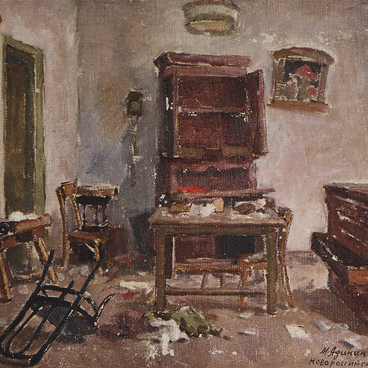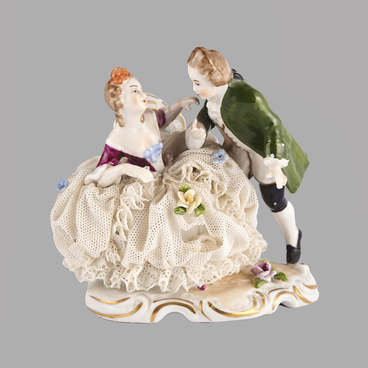The first confectionery shops opened in St. Petersburg and Moscow in the 18th century. They made cakes, nougat, sweets, and marzipans and brewed chocolate drinks. Initially, confectionery products were wrapped in paper and packed in small glass, porcelain and other boxes. A French word “bonbonniere” (from bonbon meaning “candy”) was used to designate a box for various candies and sweets. Confectioners began to order special packaging for their products.
Tin and cardboard “glued” boxes came in a wide variety of shapes and sizes. Samples of containers were sent to confectionery factories, and confectioners chose the shape and ordered the design for their brand. The packaging always included the awards that the confectionery company received for the high quality of products at trade and industrial exhibitions. The artistic style, rich colors, font, ornamental motifs, and reproductions of famous paintings — everything served one purpose: to make customers want to buy the product.
The tin from the museum’s collection has the shape of a cylinder. In the center, on a red background, there is an indication of the manufacturer: “Trading House of G. and E. Lenov.” In 1826, the merchant Sergey Lenov opened a caramel workshop in Zamoskvorechye. In 1886, the confectionery business was inherited by the grandson of Sergey Lenov — Georgy and his wife Ekaterina.
In 1900, the workshop was called “Trading House of G. and E. Lenov.” Soon, the Lenovs opened the first store of their own. In 1912, the annual turnover of the factory was about half a million rubles. In the period from 1913 to 1916, production volumes increased sharply and the range of manufactured products became more diverse. Five varieties of products were produced in the caramel department: large caramel, small caramel, lollipops, montpensier candies, and “satin pads”. In 1917, the heirs sold the factory to the Central Union for 1,800,000 rubles. It was renamed the “Confectionery Factory of the Moscow Union of Consumer Societies”. In November 1918, the factory was nationalized.
Tin and cardboard “glued” boxes came in a wide variety of shapes and sizes. Samples of containers were sent to confectionery factories, and confectioners chose the shape and ordered the design for their brand. The packaging always included the awards that the confectionery company received for the high quality of products at trade and industrial exhibitions. The artistic style, rich colors, font, ornamental motifs, and reproductions of famous paintings — everything served one purpose: to make customers want to buy the product.
The tin from the museum’s collection has the shape of a cylinder. In the center, on a red background, there is an indication of the manufacturer: “Trading House of G. and E. Lenov.” In 1826, the merchant Sergey Lenov opened a caramel workshop in Zamoskvorechye. In 1886, the confectionery business was inherited by the grandson of Sergey Lenov — Georgy and his wife Ekaterina.
In 1900, the workshop was called “Trading House of G. and E. Lenov.” Soon, the Lenovs opened the first store of their own. In 1912, the annual turnover of the factory was about half a million rubles. In the period from 1913 to 1916, production volumes increased sharply and the range of manufactured products became more diverse. Five varieties of products were produced in the caramel department: large caramel, small caramel, lollipops, montpensier candies, and “satin pads”. In 1917, the heirs sold the factory to the Central Union for 1,800,000 rubles. It was renamed the “Confectionery Factory of the Moscow Union of Consumer Societies”. In November 1918, the factory was nationalized.


